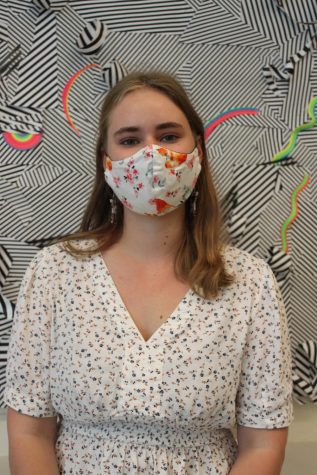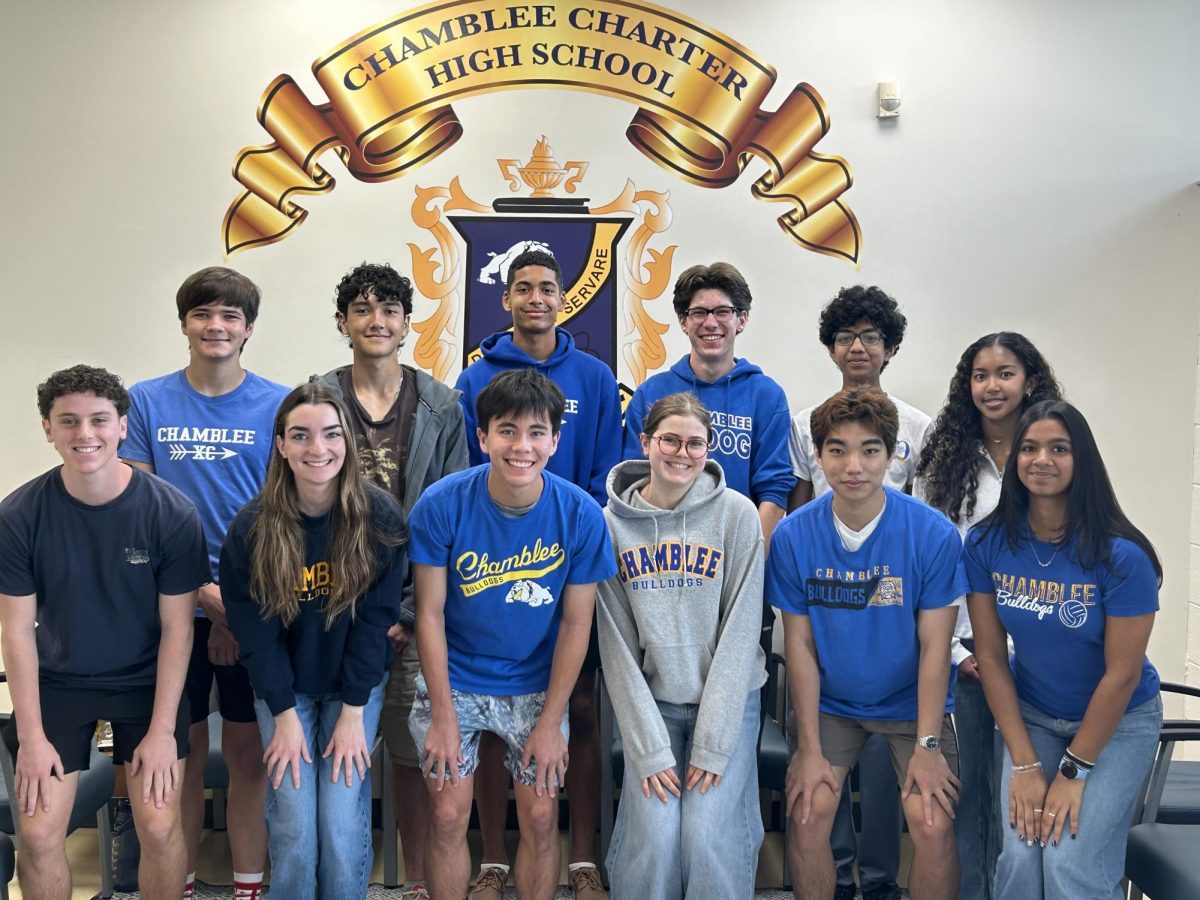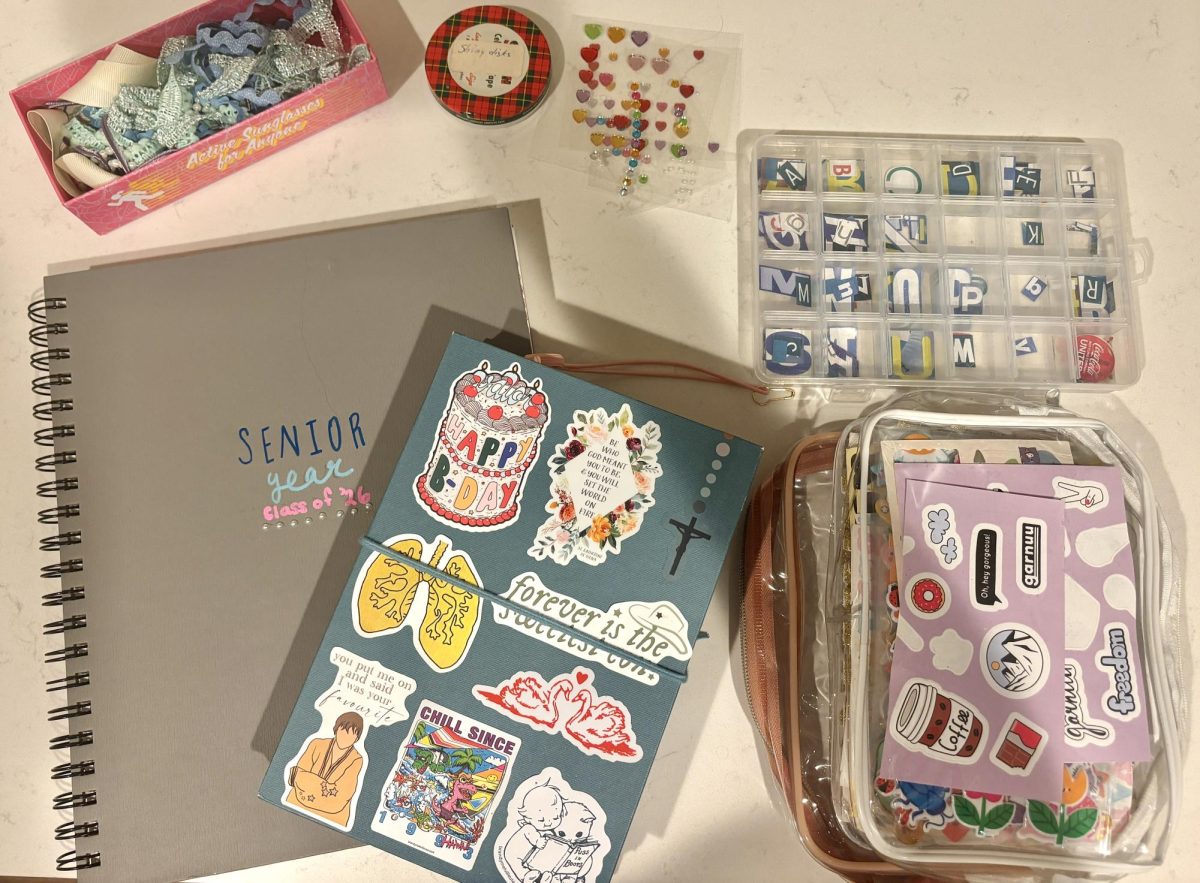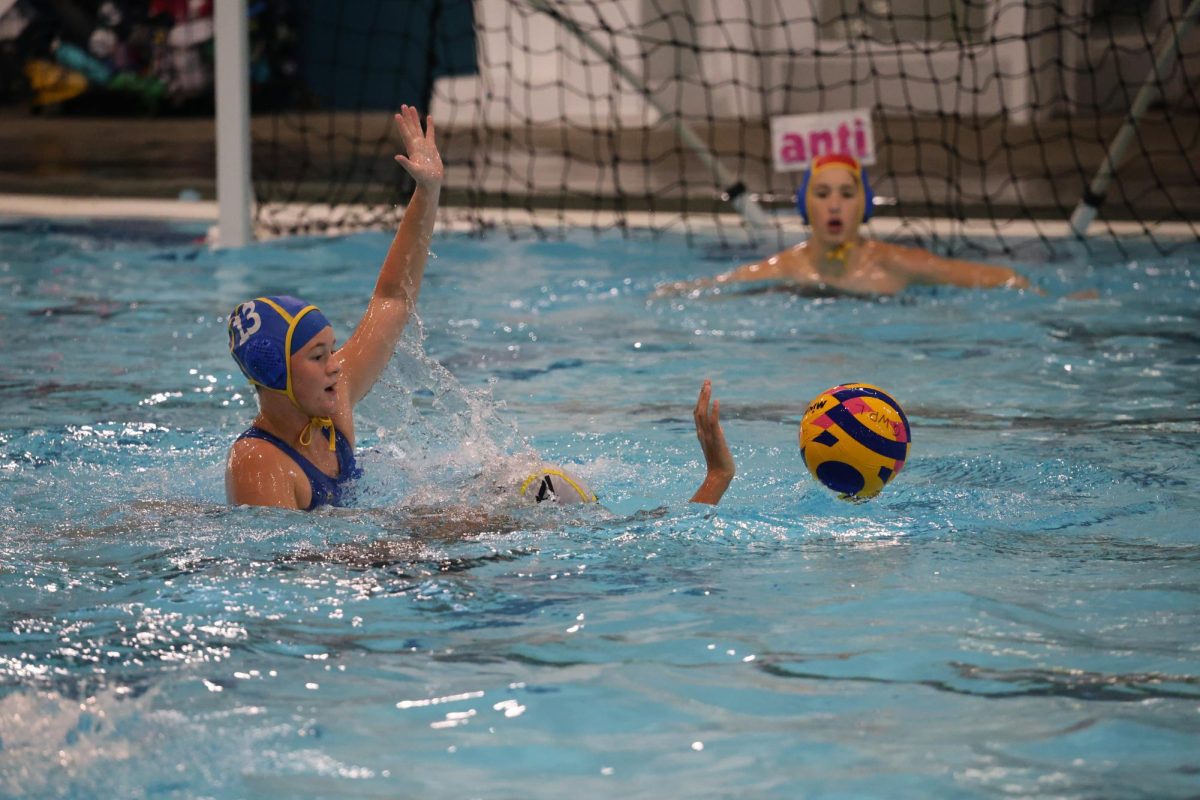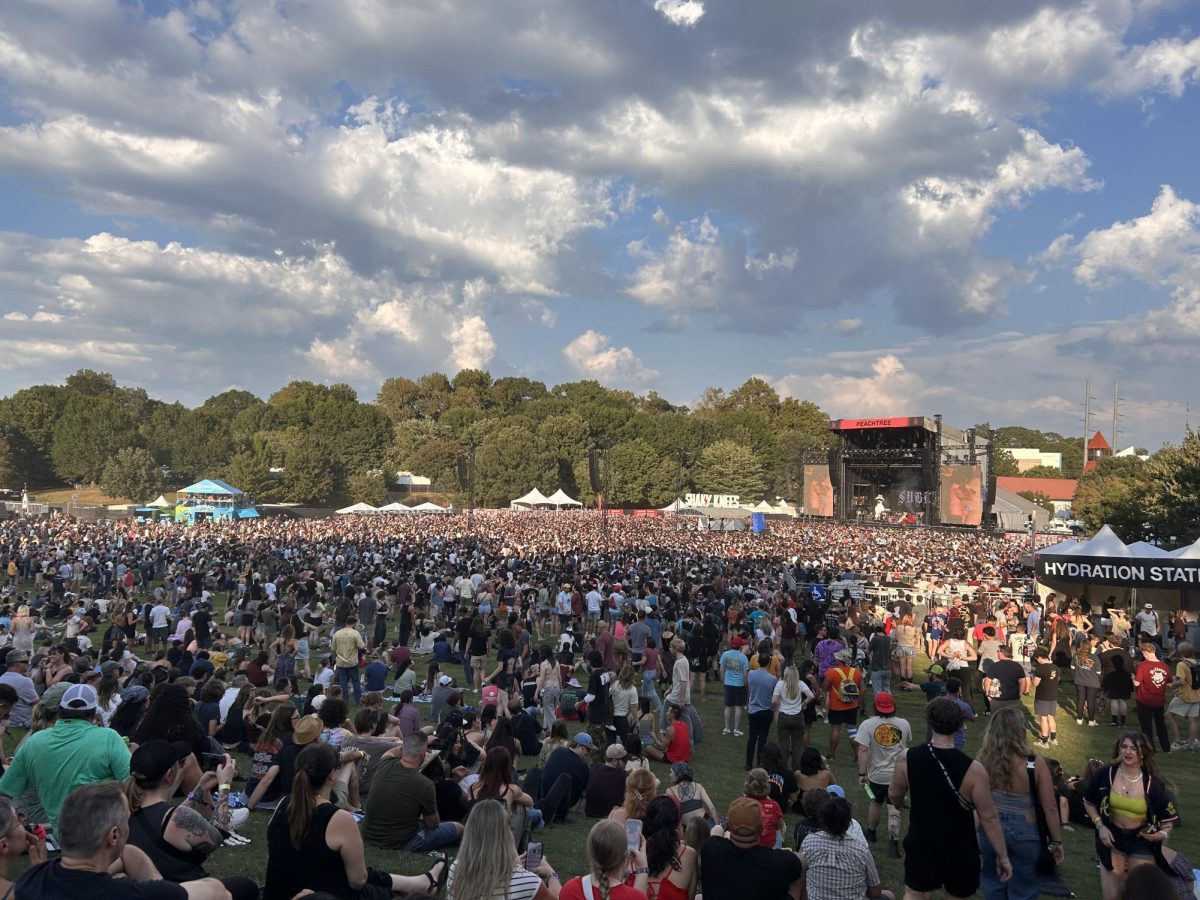Planning for an Unforeseeable Future: Class of 2021 on College Applications
February 11, 2021
Applying to college has always been a pivotal part of the traditional senior year experience. Seniors spend months perfecting their college lists, filling out applications, and writing countless essays.
While Chamblee High School remained virtual, the Class of 2021 spent most of their first semester not only traversing through virtual school but also applying to college and planning for their futures.
This year, Chamblee’s Class of 2021 had a record number of students applying to and accepted early into numerous Top 20 colleges in the U.S, as well as state universities. From Stanford University to the University of Georgia, Chamblee seniors applied to schools nationwide, seeking out programs from the arts to the humanities and sciences.
As this year’s college application season draws to a close, seniors reflected on the unique and, at times, tumultuous process.
Beginning the College Search
Even the initial search for colleges can seem daunting to most high schoolers. For Sam Hopper (‘21), who is interested in nursing schools and hopes to attend either the University of Virginia or Case Western University, counselor-recommended resources like Naviance provided an opportunity to find colleges that fit her interests.
“I started by doing the quiz thing on Naviance that shows you your most compatible colleges,” said Hopper. “Honestly, I thought it was going to be completely unhelpful, but it gave me a really really good starting point to decide what my priorities were and what sort of schools I was looking for, and most of the schools I ended up applying to were actually on that list that Naviance gave me.”
On the other hand, some seniors were more unsure of which colleges to apply to. Mary Adam (‘21) had an initial list based on her athletic interests, but it evolved significantly as the year progressed.
“So [my college search is] a little bit different because I procrastinated a lot,” said Adam. “I do have a little bit of an advantage of trying to swim in college. That kind of narrows down my list a lot. But my college search has changed so much. I had a list of like 30 colleges and that list has changed [over time].”
Searching for colleges ultimately boils down to a student’s gut feeling. By finding out what kind of education and environment is right for them, they can choose the college that leads to their ideal future.
“I began my college search thinking about which direction I wanted to take my future,” said Nicole Vaccaro (‘21).
Vaccaro is looking to go to college for art, specifically the Kansas City Institute of Art located in Kansas City, Missouri.
“For example, some options I thought of were: what type of art degree would I want? What would I be able to do with this degree in the long run? Will this degree help me reach my goals for the future?” said Vaccaro.
During a typical year, most seniors and even juniors go on college tours when possible. Visiting the campus of a school-turned-potential-home is a vital experience, but this year, traveling for college tours was deemed unsafe, so many schools provided “virtual tours” to students to offer them some perspective on the campus.
“[At] the end of junior year because of COVID, there were tons of online tours and information sessions. Those were really helpful for me because they would also bring together many different colleges at one time,” said Megan Woo (‘21).
Although it was not possible to physically gauge the atmosphere of a college, virtual tours still allowed students to narrow down their college lists.
“[Attend] virtual tours for all the schools you’re thinking about applying to,” said Hopper. “You really get to feel the campus and even though you’re not able to see it in person, there are still parts of the campus that jump out to you and make you think, ‘Wow this is a place that I could really be interested in,’ and that did a lot to help me narrow places down.”
Choosing the right college also involves finding the right fit education- and cost-wise.
“As someone wanting to go in the super-expensive-art-school direction, it was hard to find a school I could afford coming from a family with a limited budget,” said Vaccaro. “I considered UGA, Clemson University, and some smaller schools around the Southeast with art programs, but to be honest, I couldn’t picture myself happy at those schools. The school that interested me the most was the Kansas City Art Institute. [The staff] were so easy to contact, and I knew I [could] have a future there.”
Hopper considered the actual curriculum of the colleges as well as the school’s social values and activities.
“I’m going to be a nursing major, so of course, the biggest all-or-nothing thing I had to look at was whether or not the school had a nursing school,” said Hopper. “After that, the most important things that I looked at were parts of the nursing curriculum, like I really wanted a school that started nursing classes the first year rather than the third year, and I really wanted a school with a marching band and that had social values that kind of aligned with mine.”
One common stressor for students applying to college is standardized testing: the SAT and ACT are nationwide tests with scores that are almost always required for college applications. But this year, that changed, as test-optional policies were implemented to accommodate COVID-induced cancellations.
The March 2020 SAT date was only days after Chamblee closed its doors indefinitely and online learning began.
“I was signed up for the March 14 [SAT test date] and everything got cancelled on the thirteenth, so I had spent all that time studying for it to get cancelled the day before,” said Sophie Maxwell (‘21). “So I kept on signing up for them, and all of them got cancelled. I was able to take it in August, which is good, but it just added a lot of stress.”
While some students continued to sign up for these tests, others decided to save themselves the stress and time and focus on other parts of their applications.
“I am not the best test-taker, so the cancellation of the SAT [and] ACT was a life-saver. I could not be more thankful that it got cancelled, but I’m aware of the effect [a good score] has on an application, so I would recommend including any scores you can,” said Vaccaro.
The College Application Process
One of the most popular college application methods is the Common App, a centralized portal that allows students to store their information and applications in one location. As an online service, it was able to provide students a stable application experience when teachers and counselors were difficult to reach.
“COVID made it almost impossible to reach my counselor, so, to be honest, I had no idea what I was supposed to do,” said Vaccaro. “Common App was really useful because it allowed me to organize myself. I wish I used it more. However, it does not connect to every school, so sometimes it’s not an option.”
It is important to remember that most applications will cost money to submit. While in many countries applying to higher education is free, in the United States, they typically cost the applicant 70 to 90 dollars per school.
“They’re not cheap […], and costs like that are actually one of the reasons that I decided not to apply to [certain universities],” said Hopper.
When applying, most colleges require the submission of a personal statement and various supplemental essays that add personality to the dry statistics of GPA and test scores.
“I had to write a lot of different essays, but I was able to have fun writing them. I made sure to write about things I could ramble about all day, so putting it on paper wasn’t a problem,” said Vaccaro.
Hopper provides some guidance on this crucial part of the application.
“If your essays are boring to write, then they’re going to be boring to read and you should probably reevaluate,” said Hopper. “Fun fact: just because a school says they don’t have any supplemental essays doesn’t mean they don’t have any essays at all. Check that.”
In addition to the rollover of the 2019-2020 Common App essay topics to the 2020-2021 school year, an optional COVID-19 essay was included to provide students with an opportunity to describe their experiences during the pandemic.
Because the essay was optional, some students chose not to respond because they felt like the circumstances of the essay did not apply to them.
“It [felt] like [it was only for] if your family or you have been affected in any way with COVID,” said Maxwell. “It was completely optional, so I didn’t write anything because obviously everyone, especially seniors, have been affected by COVID. But I felt like it was more for if you had to take care of your family, and your grades really slipped or if you had to work five jobs. And so I didn’t want to talk about what, compared to other people, seemed [inconsequential], so I didn’t.”
Other students used the essay to expand on missed opportunities.
“The COVID essay actually [gave] me a lot of peace of mind because I was able to explain the opportunities that I lost due to the pandemic, like I got into a program at [Children’s Healthcare of Atlanta] where I was going to be volunteering at the hospital,” said Hopper.
The COVID essay also gave students the chance to elaborate on lost extracurriculars, which otherwise would have been included in the extracurricular activities section, allowing applicants to list their involvements outside of academics.
“We had a German exchange that we were going to do over the summer that got cancelled, and I was really looking forward to that,” said Maxwell. “It was half exchange, like learning about Germany, and half […] internship, so […] it would have been a nice thing to write about in essays. That was pretty unfortunate that it didn’t happen.”
Woo actually benefited from the extra time resulting from activity cancellations, and she channeled this into a research project.
“For AP Research last year, I was doing interviews […] with people in totally different time zones,” said Woo. “So once school got cancelled, it was super helpful because I was suddenly available from 6 AM until I went to sleep. It made it a lot easier for me to do my research.”
DeKalb County’s virtual policies separated many students and teachers in the fall semester. These relationships are vital for recommendation letters, but because students spent a lot less time with the staff, they relied on teachers from previous years to write their letters.
“I asked for rec letters from Ms. Marin, Ms. Staten, and Mr. Demer [since] they were all teachers I’d had in the last year that I thought I had genuinely good relationships with […] and who I thought had gotten to know me really well. Of course, the pandemic affected how much I was actually able to spend time with these teachers, but I think that the time I got to spend in their classes before social distancing and the effort that I put in their classes after social distancing made it okay,” said Hopper.
Some students found that, at the end of the day, they still felt awkward having to ask for the letters in a virtual setting instead of in person.
“The hard part was the asking of the recommendation,” said Maxwell. “Asking over email and the fact that we hadn’t been with them for five months makes it harder for them to think back on what happened in the classroom. It’s just a lot more comfortable asking someone in person, in my opinion.”
Early Acceptances and Decisions
When the application process is over, students highly anticipate college decisions. While many schools have not released acceptances yet for the regular application deadline, students who applied early were able to find out life-changing decisions earlier in the year.
Jai Ponkshe (‘21) took a unique route when he applied early and was accepted early decision into Emory University. The results of Emory’s early decisions are binding, meaning that if the student is accepted, they must attend that school and withdraw their applications from any other schools they applied to. This can be both stressful and relieving for an early decision applicant.
“It’s stressful at first, getting the application in, but once you submit it there’s a sense of both relief and stress [when] waiting for the results,” said Ponkshe. “[Early decision] is nice if you know where you want to go 100 percent.”
Ponkshe chose Emory for the personal and academic connections he has with the school.
“My family and some close friends have gone through Emory, and it’s a great school for pre-med, which is what I’m interested in,” said Ponkshe. “It’s also super close to home and in-state, which is nice. I also just love the atmosphere of Emory and think it’ll be a great fit.”
For students who received early acceptances and entered the initial stages of committing, college expenses were at the forefront in influencing their thought process.
“There’s two sides to [choosing a college]. There’s the college that’s my dream, where I want to go, and then you also have to consider the finances,” said Maxwell. “I am most likely going to go to [graduate] school, so I have to think about all of that. So in my head, I kind of know that UGA is the most financially smart option, so that’s probably where I’ll end up, but I’m not going to commit until I see because you never know.”
Fortunately for Vaccaro, her artistic abilities helped her earn a significant amount of financial aid.
“Not only was [Kansas City Institute of Art] exactly what I wanted, but the amount of financial aid I received was unbelievable. With the scholarship I received based on my portfolio, I finally found an art school that I could afford,” said Vaccaro.
COVID-19 also changed acceptance conditions. With the uncertainty of whether classes would be online or in person, some students have chosen to take gap years.
“I know a lot of students have chosen to do a gap year—and I can’t say I blame them. If classes were solely online in the fall, I would take a gap year as well,” said Vaccaro.
Colleges like Stanford have seen a major influx of deferring students, and students speculate this might change the number of spots available to this year’s applicants.
“I don’t know how true this is, but people were talking in the Stanford admit chat that one-fourth of people who were admitted for the class of 2024 deferred, so I don’t know if that means that there were only three-fourths of the spots normally open,” said Woo. “So I don’t know exactly how it affected it, but that’s a huge number in my opinion and a big change.”
As juniors begin to take their SATs and start their college searches, current seniors are a valuable resource in navigating the application process.
“Don’t waste your time and money by applying to schools you know you would never go to, but give yourself options in case things don’t work out,” said Hopper.
Another trap to avoid is procrastination. By submitting applications early, seniors can avoid stress in their second semester.
“Definitely don’t procrastinate. I did. It worked for me, but I don’t recommend it, so don’t do it,” said Adam. “I would also say try to apply to as many colleges as you can early action. It’s a lot less stressful because all the scholarships go through early action, and it’s so much more stressful to be doing it [later] than it is to be getting it out of the way early on.”
Early applications also have the capability to increase the chance of acceptance.
“I’m a big proponent of early action just because I think you have a much greater chance for most schools of getting in,” said Woo. “[Generally] less people are applying, and they’re still taking like a pretty substantial portion of their class early action.”
At the end of the day, creating an application that is attuned to a specific college can make the difference between an acceptance and rejection.
“The best piece of advice I can give is to make sure you establish a connection with the school. Advertise yourself as someone they want, not the other way around,” said Vaccaro.

